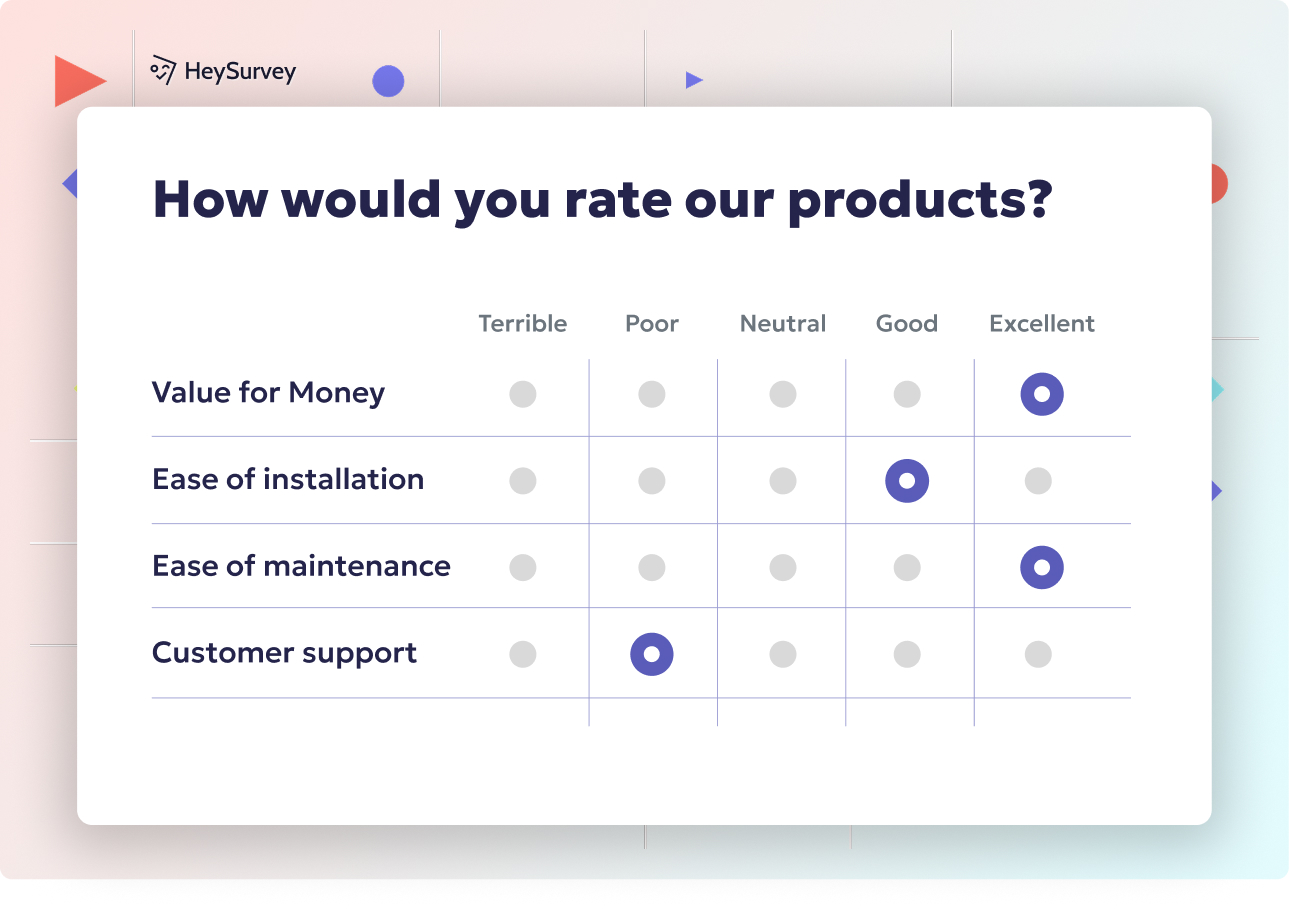30 Effective Speaker Evaluation Survey Questions for Experts
Discover 30 expert speaker evaluation survey questions with tips to boost feedback quality and improve your event’s speaker performance.
Feedback after an event isn’t just a polite afterthought—it’s a powerhouse tool that transforms speakers, shapes programs, and makes attendees happier. The magic happens when organizers send speaker evaluation surveys right after the session or, at the latest, within 24 hours—when ideas are still fresh and honest. Mixing different question types not only captures more detailed feedback, but it actually boosts how many people bother to complete the survey. Below, you’ll discover eight powerful survey question styles, sample questions for each, and expert ways to get the best results every time.
Likert Scale Questions
Why & When to Use
If you want to capture nuanced emotions and opinions about your speaker, a Likert scale is your best friend. These scales stretch from one extreme to another—think “strongly agree” to “strongly disagree”—so you can dig into details that numbers alone won’t catch. Likert scales shine when you need feedback on expertise, clarity, and engagement.
A Likert question doesn’t just tell you “yes” or “no”—it reveals all the shades in between. This is super useful if you want to know more than just “did they enjoy it?” and instead find out if the pacing was almost just right or if the visual aids made things a little bit clearer. Surveys with these questions work especially well when you’re fine-tuning how speakers deliver material or deciding where extra training is needed.
Likert scales also encourage attendees to think before they click. Instead of automatically choosing yes or no, they pause to reflect on exactly how much they agree (or disagree), giving you feedback you can trust. Ideal times to grab this nuanced info? Right after the session, before memory fades, and when the details are still bubbling at the top of everyone’s mind.
Let’s see how easy it is to frame effective Likert questions for speaker evaluations:
- The speaker’s content was well-organized.
- The speaker communicated concepts clearly.
- The pacing of the presentation kept me engaged.
- Visual aids enhanced my understanding of the topic.
- I feel more confident about the subject after this session.
By including these questions, you’re helping both the speakers and future audiences enjoy a richer, more valuable experience. After all, understanding attendee attitudes is the first step toward top-notch sessions.
Research indicates that including a neutral midpoint in Likert scales allows respondents to express neutrality, enhancing the accuracy of survey data. (towardsdatascience.com)
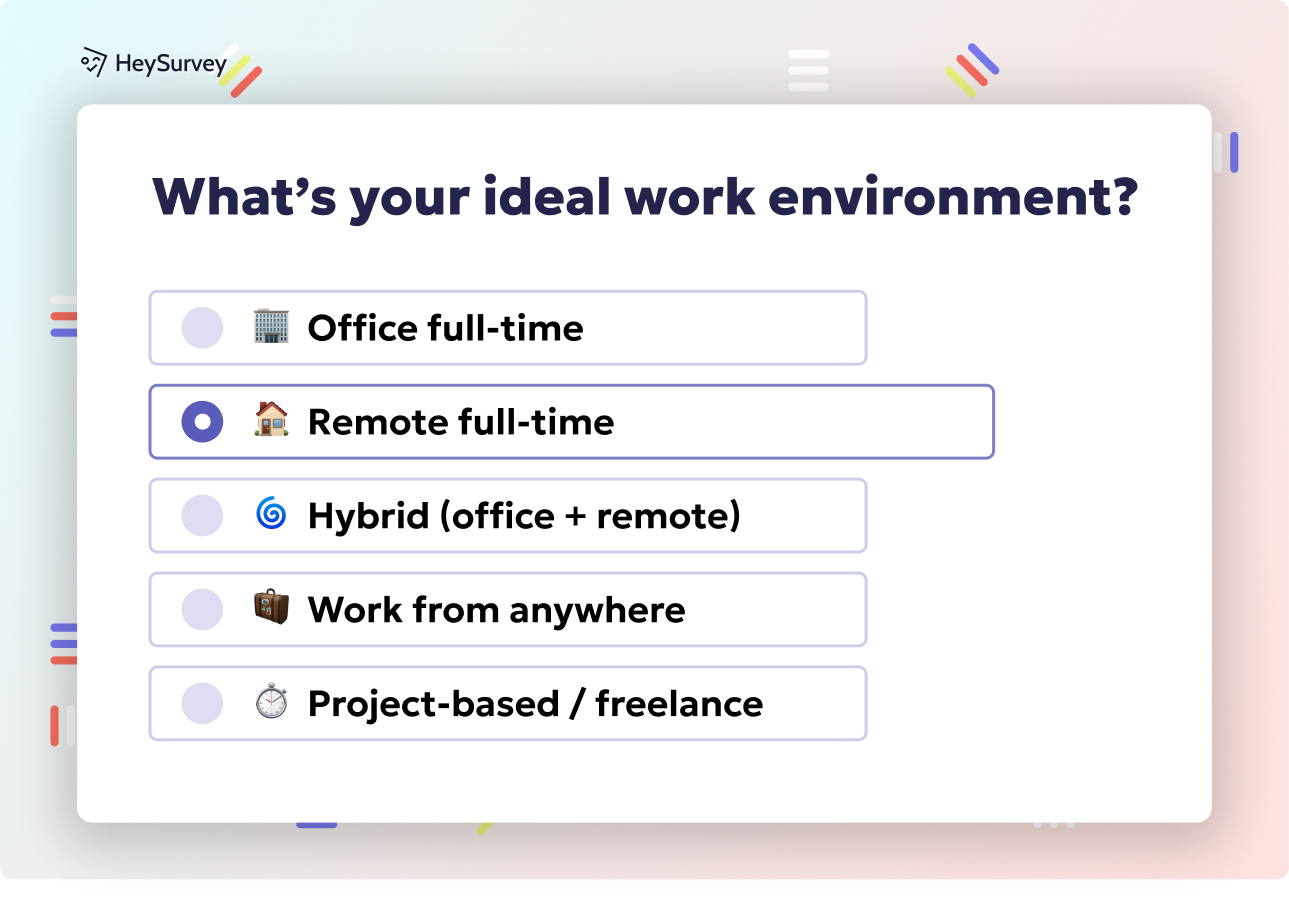
How to Create a Speaker Evaluation Survey with HeySurvey in 3 Easy Steps
If you’re new to HeySurvey and ready to craft a speaker evaluation survey, you’re in luck—it’s simpler than you might think! Here’s a quick guide to get your survey ready, from zero to published, in just three smooth moves.
Step 1: Create a New Survey
Start by logging into HeySurvey (or jump right in if you want to try without an account). Click Create New Survey on your dashboard. You can pick from:
- Empty Sheet: build your survey from scratch if you like total control.
- Pre-built Templates: perfect for diving in faster with a structured start tailored to speaker evaluations.
- Text Input Creation: type your questions and let HeySurvey do the formatting magic.
If you want to get rolling even quicker, feel free to tap the button below this instruction to open a speaker evaluation template pre-loaded with the essentials.
Once selected, give your survey an internal name that helps you find it later—something clever, or just “Speaker Feedback Q2” works fine.
Step 2: Add Questions
Next, it’s time to add those all-important questions. Click the Add Question button (either at the top or between questions). HeySurvey’s question types cover all 8 key areas for speaker evaluation surveys mentioned earlier:
- Likert Scale (for nuanced agreement questions)
- Star / Numeric Rating Scales (quick summary scores)
- Yes/No Questions (easy binary checks)
- Multiple Choice (structured options)
- Semantic Differential (bipolar scales)
- Open-Ended (for detailed commentary)
- NPS (Net Promoter Score loyalty gauges)
- Demographic & Contextual (audience profiling)
Select the type you want, and type your question text. Use HeySurvey’s markdown formatting for bold or bulleted lists if you want, to make questions pop. Mark the question required if it’s a must-have.
You can also spice things up by adding images or gifs to questions, or duplicate similar questions to speed things up.
For smart flows, use branching settings to tailor follow-up questions depending on previous answers. It keeps things relevant and your respondents engaged!
Step 3: Publish Your Survey
Once your questions are polished, hit the Preview button to see what respondents will see. Take a spin on your phone or desktop and tweak design elements via the Designer Sidebar as needed.
When ready, click Publish. You’ll get a shareable link to send to attendees immediately after sessions (remember, within 24 hours is prime time for highest response rates).
Publishing requires an account, but it unlocks response viewing and data exports for your analysis. You can also embed the survey into your website or event platform with an iframe if you like.
Bonus Steps to Make Your Survey Shine
Apply Branding
Make your speaker survey unmistakably yours by adding your company or event logo. Use the branding option to upload your image—it shows up at the top left corner on every page. Customize colors, fonts, and backgrounds in the Designer Sidebar to match your style. A branded survey feels professional and builds trust.
Define Key Settings
Hop into the Settings Panel to:
- Set start and end dates for survey availability: perfect if you want to limit response time.
- Add response limits to cap how many can answer if needed.
- Define a redirect URL so responders land on your event site or thank-you page after finishing.
- Enable or disable result viewing, letting attendees see live results if you wish.
Tweaking these settings lets you control the participant experience from start to finish.
Skip Into Branches
Want to get fancy with logic? Use branching to create questions that only appear based on previous answers. For example, if someone says “No” to “Did the speaker provide actionable takeaways?” you could show a follow-up asking what takeaways they were hoping for.
Branching personalizes the experience and helps you gather more relevant, actionable feedback without overwhelming anyone.
With just these 3 core steps plus a few extras for polish, HeySurvey puts powerful speaker evaluation surveys within your grasp—even if it’s your first rodeo. Ready to try? Click below to open a tailored template and start collecting superstar feedback today!
Star / Numeric Rating Scale Questions
Why & When to Use
When time is short or you want a dashboard-ready metric, star and numeric rating scales shine. These quick-hit formats (think 1-10 or 1-5 stars) are inviting on mobile and give you instant scores for dashboards, presentations, or tracking speaker trends across events.
Numeric scales make feedback super visual and easy to compare over time. With just one tap, attendees sum up their thoughts. This is perfect when you need a summary score for headline performance or must-see metrics for sponsors. A five-star system is especially handy when you want a clean, simple snapshot of opinion—no mental gymnastics required.
These questions are great to open or close a survey, and they work especially well on mobile devices. Attendees appreciate how quickly they can rate their experience while organizers love how neatly these answers fit into graphs and charts.
Here are five sample questions to add those eye-catching summary scores to your post-session surveys:
- Overall, how would you rate the speaker’s performance? (1–10)
- Rate the relevance of the speaker’s examples. (1–5 stars)
- How informative was the Q&A segment? (1–10)
- Rate the speaker’s time management. (1–5 stars)
- How likely are you to attend another session by this speaker? (1–10)
Quick to answer and easy to analyze, star and numeric questions keep everyone happy—from busy attendees to data-loving organizers.
Research indicates that star and numeric rating scales yield similar results in user experience evaluations, suggesting both formats are equally effective. (measuringu.com)
Yes/No (Binary) Questions
Why & When to Use
Sometimes, you need crystal-clear answers. That’s where yes/no—or binary—questions come to the rescue. Absolutely no guesswork, no shades of gray, just undeniable facts straight from your audience.
Yes/no questions are perfect for uncovering wins (or warning flags) within your session—think audio quality, actionable takeaways, or even basic expectations. These questions are ideal when you want decisive feedback or need compliance stats pitched at your stakeholders.
Their biggest strength is speed. Attendees love them because they fly through the survey, feeling helpful but never hassled. Organizers love them because analyzing results is as easy as checking a box.
Use these questions for anything where the answer should be obvious or where a single miss could call for fast fixes—like if the session was too long, if the visuals didn’t show, or if the speaker lost the crowd.
Sample yes/no items for your next evaluation survey:
- Did the speaker meet your expectations?
- Was the audio quality satisfactory?
- Did the speaker provide actionable takeaways?
- Was the session interactive enough?
- Would you recommend this speaker to a colleague?
Add one or two of these quick-check questions to your survey, and you’ll have instant clarity on what truly worked—and what definitely didn’t.
Multiple-Choice Questions
Why & When to Use
If you want to streamline analysis while still offering structured insights, multiple-choice questions are a perfect solution. By letting attendees pick from pre-set answers, you get results that are not only speedy to review, but also super easy to compare across all your sessions.
Multiple-choice shines when you need details about session logistics, learning environments, or content preferences—but don’t want to wade through a million versions of “other.” You can measure learning style, preferred formats, even prior knowledge, all without complicating the survey (or your results dashboard).
The magic here is in the options: Give just enough variety for insight without going totally overboard. Multiple-choice is especially useful if you want to segment your audience based on different preferences, backgrounds, or participation styles.
Example multiple-choice questions that help you pinpoint what made your session click:
- Which aspect of the talk was most valuable? (Content depth, Practical tips, Inspiration, Networking)
- How did you attend? (In-person, Livestream, Recording)
- The speaker’s delivery style was: (Formal, Conversational, Story-driven, Data-heavy)
- Which visuals were most effective? (Slides, Videos, Live demo, Whiteboard)
- What level of prior knowledge did you have about this topic? (None, Basic, Intermediate, Advanced)
With well-chosen options, your multiple-choice questions deliver sharp insights for targeted improvements.
Multiple-choice questions (MCQs) are effective for assessing a broad range of content and learning objectives, particularly lower-level knowledge, but can also evaluate higher-order thinking if well-constructed. (ii.library.jhu.edu)
Semantic Differential Questions
Why & When to Use
For a deep dive into emotional impressions, nothing beats semantic differential questions. Here, attendees glide along a sliding scale between two extremes, giving truth to subtle shades that straight ratings often miss.
This question style is like turning up the resolution on your feedback. Instead of just “good” or “bad,” you find out exactly how “engaging,” “dynamic,” or “deep” a session felt to each participant. These questions are brilliant for uncovering perception gaps or clarifying ambiguous reactions.
Semantic differential questions excel when you suspect there’s more going on beneath the surface—or when you want to compare how two very different speakers land with the crowd. The visual nature of the scale also makes filling them out a little more fun and less repetitive.
Check out these ways to capture the emotional temperature of your event:
- Disorganized 1---7 Structured
- Dull 1---7 Engaging
- Confusing 1---7 Clear
- Passive 1---7 Dynamic
- Superficial 1---7 Deep
This type of question adds a rich, important layer to your survey—even a single one delivers powerful insights.
Open-Ended Questions
Why & When to Use
Every now and then, you need unfiltered, authentic feedback straight from the heart. That’s where open-ended questions bring the gold. This question type invites attendees to write whatever they really think—brilliant for stories, quotes, and things you never saw coming.
Open-text responses help explain low (or sky-high) scores, shed light on what really matters to your attendees, and offer concrete suggestions for leveling up next time. The catch? Open-ended questions can feel draining if overused, so limit them to your essentials—two or three per survey max.
It’s smart to use open questions right after a rating, so folks can share why they scored things the way they did, or to unearth actionable next steps for your speaker or event. Just remember: brief is best, and direct questions get the best gems.
Here are five open questions guaranteed to spark useful insights:
- What was the speaker’s greatest strength?
- How could the speaker improve future sessions?
- Which specific insight resonated most with you?
- Describe any technical issues that affected your experience.
- Share one actionable takeaway you plan to implement.
Even a single honest paragraph can reveal something that transforms sessions for everyone.
Net Promoter Score (NPS) Questions
Why & When to Use
NPS turns audience loyalty into an industry-standard KPI—perfect for benchmarking and post-event bragging rights. This simple series takes the emotional pulse of your crowd, revealing whether your speakers are merely tolerated or truly adored.
The flagship NPS question is simple: “How likely are you to recommend…” on a 0–10 scale. But you can—and should—dig deeper. Open follow-ups give you context for the score, while yes/no and intent questions highlight who your true fans are, all with just a handful of queries.
NPS is perfect when you need a convincing stat for sponsors, a bonus trigger for star speakers, or a “how are we doing?” checkpoint over a long season of sessions. It’s fastest when attendees already know the NPS drill (which many now do), so they’re not shy about sharing their numbers.
Here’s how to cover all your NPS bases in five sharp questions:
- On a scale of 0–10, how likely are you to recommend this speaker to a colleague?
- What is the primary reason for your score? (Open text)
- What could move your rating closer to 10? (Open text)
- Have you recommended this speaker before today? (Yes/No)
- Would you attend a paid workshop led by this speaker? (0–10)
NPS scores, especially combined with “why” and “how to improve” queries, help organizers track loyalty, uncover patterns, and wow future crowds.
Demographic & Contextual Questions
Why & When to Use
If you’re ready to segment feedback for deeper insights, demographic questions are must-haves. They help you see the big picture, dividing responses by industry, job function, or experience level—so you know if feedback is coming from total newbies or old pros.
These questions let you slice and dice the data, revealing if certain speaker styles land differently with marketing managers than with software engineers, or if first-timers view sessions through different glasses than seasoned regulars. Just make sure to keep demographic asks as minimal as possible—too many, and they’ll tank your completion rate.
Reserve these for the end of your survey, and always flag them as “optional” if possible. Remember: you want enough detail to be useful but not so much that attendees feel it’s a census instead of a survey.
Try these go-to demographic questions to sort your responses smartly:
- What is your primary job function?
- How many years of experience do you have in this field?
- Which industry best describes your organization?
- Is this your first time attending an event by our organization? (Yes/No)
- How did you hear about this session? (Email, Social, Colleague, Other)
With just these basics, you’re better positioned to fine-tune session content, marketing, and even speaker selection next time around.
Dos and Don’ts for Crafting Speaker Evaluation Surveys
Every great survey needs a few golden rules. Get the basics right, and your feedback will glitter with insights; mess it up, and those gems get buried under gripes.
Here’s the quick list of “absolutely do, definitely don’t” for your next questionnaire:
DO combine 3–4 question types to balance data depth and keep things interesting.
DO keep the survey under 10 minutes and test how it feels on a phone—it’s where most people answer!
DO pilot your survey with a small test group to weed out jargon, awkward wording, and “what does that mean?” moments.
DON’T overload with jargon or double-barreled questions—you want clear, honest answers, not confusion.
DON’T force every question as required—make key metrics mandatory, but let the rest slide to keep response rates high.
DO close the loop: Share results or improvements with both attendees and your speakers. Let people see their feedback at work.
A bite-sized, well-balanced survey isn’t just more fun for attendees. It’s also a treasure trove of actionable ideas for speakers and organizers alike.
So, the next time your event wraps, remember: A smart mix of question types and a few friendly rules are all it takes to turn fresh feedback into future standing ovations. Speaker evaluation surveys really can be a game-changer—for your speakers, your sessions, and your audience.
Related Feedback Survey Surveys
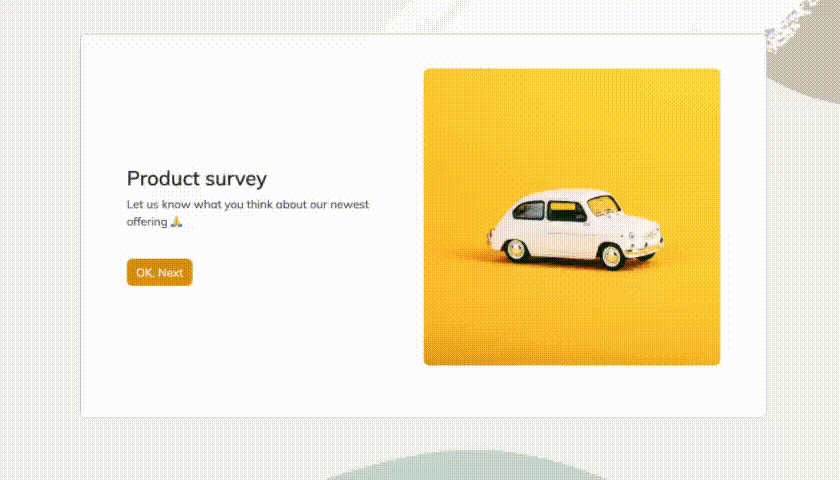
25 Catering Survey Questions to Collect Actionable Feedback
Discover 30 expert catering survey questions to gather actionable feedback that enhances menus, s...
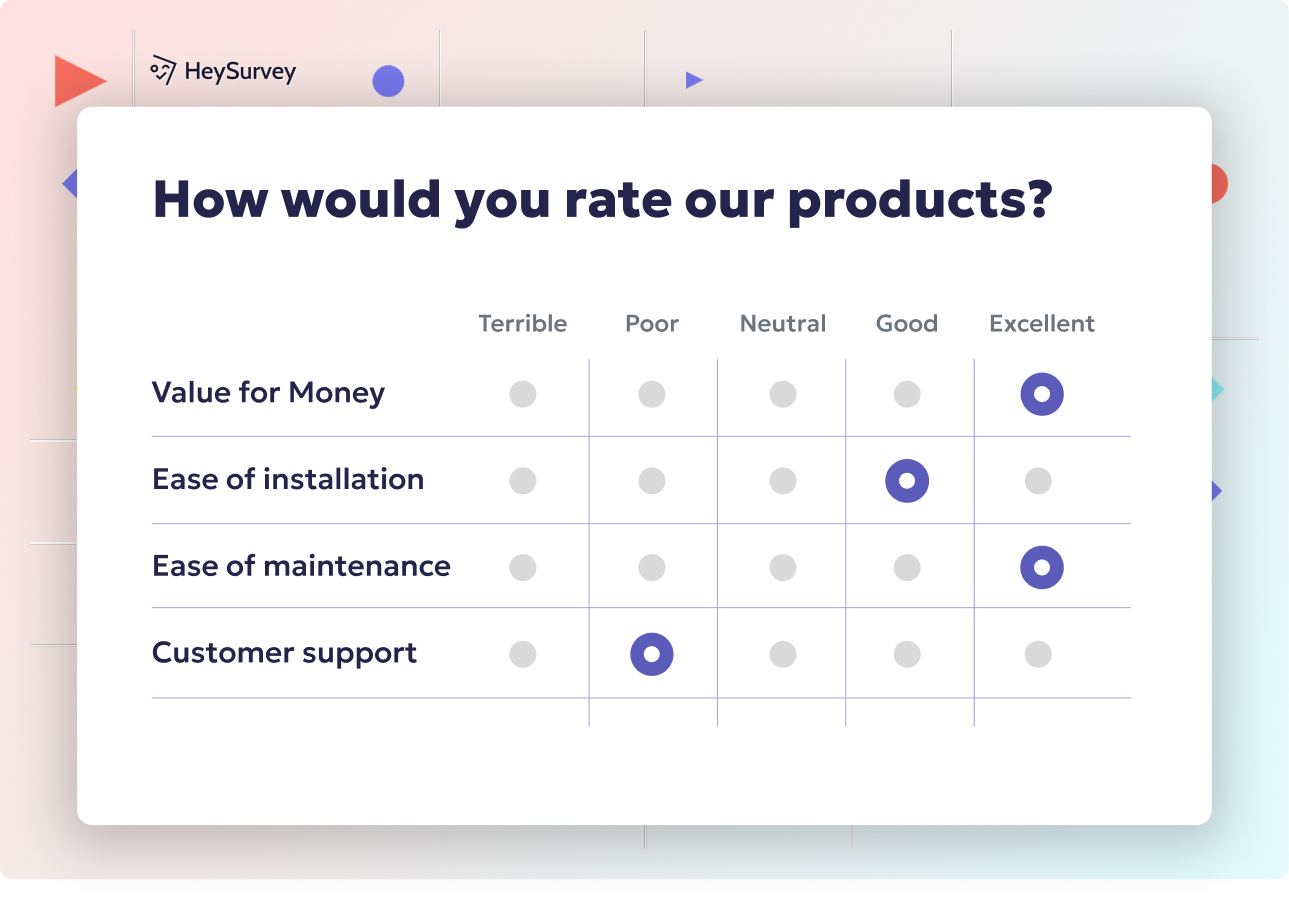
30 User Feedback Survey Questions for Better Insights
Discover 40+ user feedback survey questions across 8 types to boost product insights, UX, and cus...
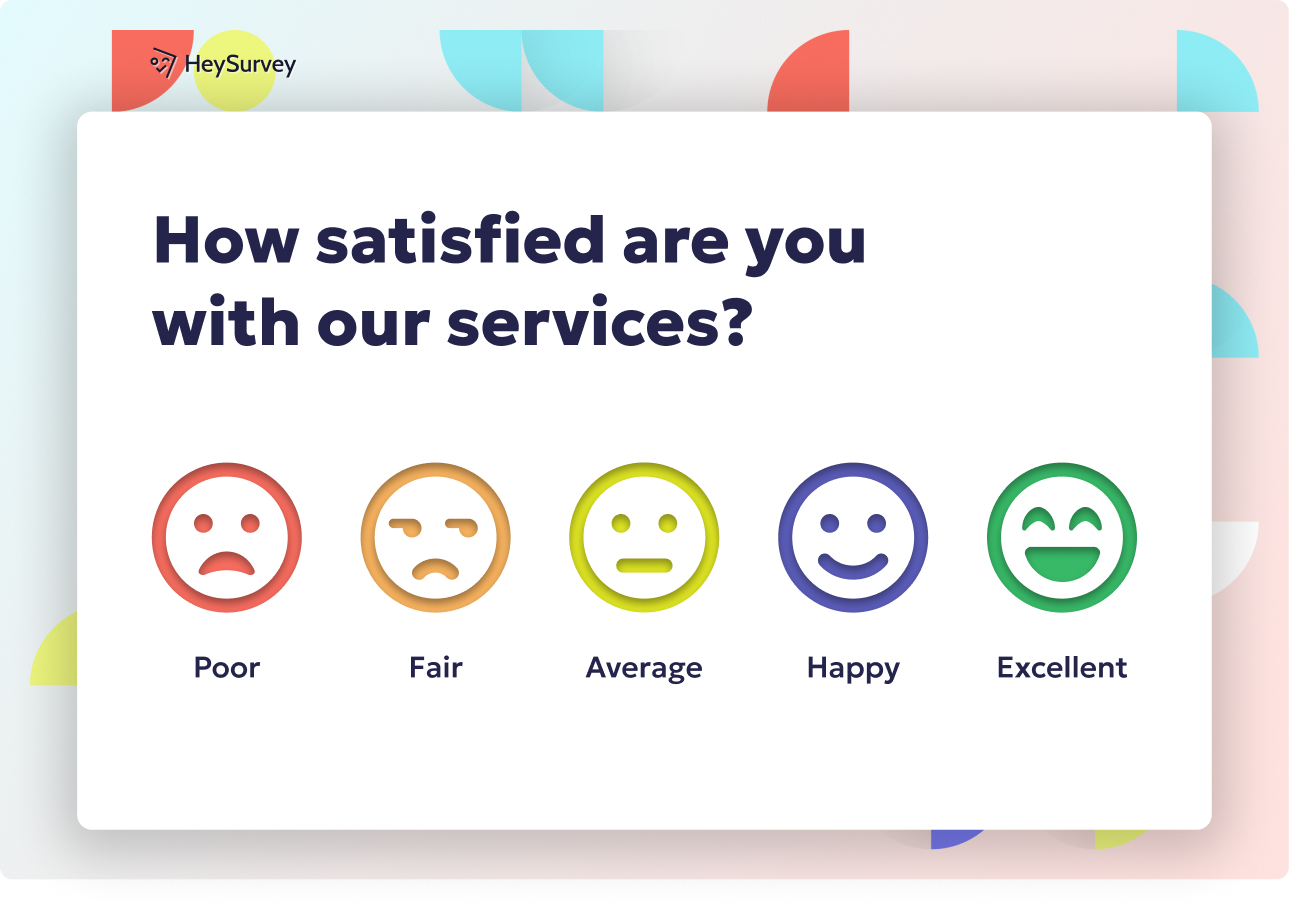
30+ Environment Survey Questions for Sustainable Insights
Explore 30+ environment survey questions with expert tips covering awareness, behavior, corporate...

